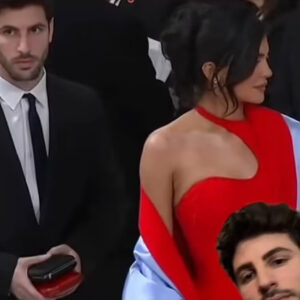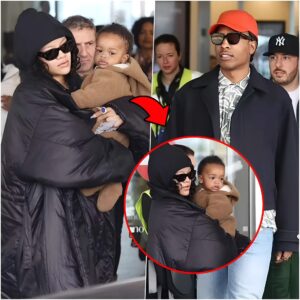
In this FandomWire Video Essay, we explore how Fast Five changed the Fast & Furious franchise forever.
Check out the video below:
Fast Five Changed Everything…

For over two decades now, The Fast and the Furious franchise has been thrilling audiences and rocking the box office with its adrenaline-fueled stunts, NAS (NAHS) boosters, and corona lights. The franchise has racked up a combined box office total of over six billion dollars and climbing, making it one of the top-grossing film series of all time. That’s an impressive accomplishment for any franchise, let alone one that began as an adaptation of a magazine article…
And that is perhaps the most interesting and baffling thing about the Fast Franchise, how its humble beginnings as a straightforward buddy-cop action movie with illegal street racing as a backdrop transformed and evolved into a preposterous narrative of CGI explosions, over-the-top stunt work, and espionage. So how exactly did we get from where it started to where it is now? How did the series manage to change lanes so quickly, essentially Tokyo drifting into the self-aware spoof of its former identity? Well, the majority of this shift in tone and quality can be traced back to a single entry, arguably the best entry… Fast Five. So, strap into your seatbelt, shift into top gear, and let’s explore how Fast Five changed the franchise forever.
Let’s rewind the clocks back to 2001 with the original film, The Fast and the Furious – a film that is widely considered to be an almost beat-for-beat rip-off of 1991’s Point Break due to its extremely similar plot and even more familiar characters and relationships. And just like Point Break, The Fast and the Furious proved to be a sleeper hit with Variety’s Tod McCarthy calling it “The film, which was inspired by a written feature titled “Racer X” in a 1998 issue of VIBE Magazine, went on to gross over $200 million worldwide off of a modest budget of 38 million”. This was the birth of the franchise that would proceed to have an identity crisis with 2 Fast 2 Furious, which saw a modest box-office bump from the original with 236 million, but significantly less favorable reviews and an absent Vin Diesel; arguably the biggest draw of the original film. The Fast and the Furious: Tokyo Drift, which was poised to be a reboot of sorts, sent the series in reverse with its weakest box office yet. This brings us up to 2009’s Fast & Furious, where the franchise certainly wasn’t out of its rut and was still struggling to find its identity – but due to the returning original cast, following-up of all the plotlines left open-ended at the end of the first film, and Justin Lin’s solid direction, it went on to become the best-performing film of the franchise, concluding on an open-ending that leads directly into the opening sequence of Fast Five.
Everything previously mentioned is meant to emphasize how much of a saving grace Fast Five was for the franchise at this point; it was truly their hail-mary moment that would prove to make or break the longevity of the series. The film not only saw the return of director Justin Lin and the usual stars like Vin Diesel, Paul Walker, and Jordana Brewster – but it opted to bring back almost all of the major players from the original four films such as Ludacris, Tyrese Gibson, Gal Gadot, Sung Kang, and more. This immediately made the film feel bigger than any other entry in the franchise, but even more importantly, inherently made the core message of “the importance of family” all the more prevalent – as it truly felt like every plotline and every character had led to this moment. All of this adds up to the three magical components that make Fast Five not only the best entry in the franchise, but the true turning point in the series’ – Justin Lin’s direction, the raising of stakes, and perfect adversaries for our heroes, and most of all – the message of family and the heart at its core.
Justin Lin proved himself to be a worthy director with Tokyo Drift and 2009’s Fast & Furious. And even though those films weren’t the best of the series, they proved that Lin had an eye for practicality and understood the goods of what the franchise had to offer when it was firing on all cylinders. Universal giving Lin the opportunity to direct Fast Five was the single most significant defining moment for the franchise, as his commitment to practical stunts and on-location shooting perfectly culminates into a purely authentic and genuine movie-magic experience.
Lin’s commitment to doing almost everything he can practically is deeply felt from the incredible first 20 minutes, raising the bar from the get-go with an exhilarating train heist. It’s this commitment to practicality and on-location shooting that adds to the spectacle, and it’s something that’s becoming more and more rare. As technology and special effects continue to progress, many major franchises are opting to film their cast in increasingly virtual landscapes. Most notably is Disney Plus’ The Mandalorian which is filmed nearly entirely in “The Volume.” And while this technology is impressive, it loses something of value in the translation, even if we as an audience can’t quite put our finger on it.
Lin doesn’t stop there, but instead goes the extra mile to make every subsequent action sequence as nail-biting and enthralling as it can possibly be – it feels so tense because we know that these actors are physically there. We can FEEL it. And even more importantly, that most of these stunts are completed with minimal CGI assistance.
The third act features the bank heist, in which we see our heroes… or maybe they’re anti-heroes, not only steal a vault and drag it across Rio de Janeiro behind two muscle cars but also use it as a WEAPON against the corrupt police force that are chasing them. To pull this off, the crew actually built a car within the vault and stationed a stuntman inside, steering and driving the vault to bring the action to life. This makes all the difference, as it takes the extra effort to make the audience feel as immersed and in on the action as possible. Sure, they could’ve used CGI special effects to create a fake vault, and honestly, that probably would have been significantly easier, but the visual display of the car chase and resulting destruction is so incredibly immersive and visceral on the screen, and no amount of CGI would have matched that final product.
The elevated action for Fast Five was significant and signaled a change in focus that the series would follow for the remaining films. However, the action is only as good as the story and stakes surrounding it; Fast Five paves out a fairly straightforward, but nonetheless effective, emotional stake based within the ending of 2009’s Fast & Furious. The film begins with Dom, Brian, and Mia on the run and desperately trying to find both shelter and a good pay day. They’ve found themselves on the FBI’s most wanted list due to Dom’s prison escape and Brian turning his back against the bureau. They’ve all sacrificed for the sake of family – but now is when it’s all being put to the test, and they bet quite literally everything on pulling off the Rio heist. In comes Dwayne “The Rock” Johnson as Hobbs, who serves as one of the primary antagonists in the film… until he isn’t. Context is key within why Dom and Brian are fugitives, and Hobbs is a man who goes against the idea of trying to understand the criminals he goes after; he gets a file on his desk and immediately goes after the target, without question.
This instantly builds a rift between him and Dom, and the tension between the two continually builds throughout each encounter until it culminates in an epic brawl between the two powerhouse performers. The brawl itself isn’t even the biggest crescendo of their relationship, however – but instead, it’s that of the realization of a mutual enemy within Hernan Reyes, the corrupt politician that Dom and his family are attempting to steal from. This launches the “Friend-or-Foe” on-again, off-again dynamic that would become a staple of the series.
The addition of Johnson to the recurring cast of characters was an incredibly smart move that added another layer to the film’s arc. Rather than being hunted by faceless lawmen, we have a central character to act as the leader in the hunt against the core cast of characters. Hobbs is a domineering presence and Johnson joins the franchise at the height of his Hollywood status. These days, his bankability is on the decline, with DC’s Black Adam being a clear indicator of his waning popularity. But in 2011 his stardom was unmatched. He was a rising performer whose muscles were only outmatched by his charisma, and his larger-than-life appearance and wholesome persona were a perfect fit for the new direction that the Fast Franchise was heading in and allowed for Dominic Torreto to have another dominant, muscle-bound presence to share the screen with.
In the end of the film, once Hobbs and Dom have taken down Reyes, Hobbs only gives Dom and his family a small window of time before he promises to go hunting for them again. This helps build a sense of tension within not only the entire heist but within Hobbs as a character and his relationship with the family, that doesn’t let up until the credits roll. It’s perfect, and it makes the reveal of the second-vault twist all the more shocking and exciting.
The keyword here is family, and yes, the meme of family within the Fast & Furious franchise has probably tainted any genuine discussion about the themes of it found here but bear with us anyway. It’s truly endearing to see most of these characters come together for the first time to bond and act off one another, creating a sense of chemistry and goodwill with the audience that is still riding strong with each subsequent sequel to this day. Roman and Tej have a lovable, comedic energy within their dynamic and prove to be worthy additions to the team in moments of crisis. Han and Giselle’s relationship is so palpable from the moment they lock eyes with one another, and Leo and Santos make for excellent comedic relief.
However, it’s really the plot device of finding out that Mia is pregnant that shapes the entire heart of the film and adds an extra bit of tension and reason for them to all stick together until the very end; it helps the core team realize that it’s bigger than just another payday for them, but that it could buy them a future they’ve been dreaming of since their very first appearance in the franchise. In turn, Vince’s death in the third act is a perfect stepping-off point before the heist goes into fruition, that reminds the audience that these characters are entirely vulnerable and are risking everything. This vulnerability would come into question with some of the later sequel’s more outlandish moments, but in this film that balance was perfect.
The balance of heart, love, and loss is what makes the emotional core of Fast Five the strongest of the entire franchise, and it makes the finale of seeing each character get their momentary happy-ending all the sweeter. Sure, there’s a post-credit scene revealing that Letty, played by Michelle Rodriguez, was alive, effectively setting up another sequel – but there seemingly was a bit of knowledge here that it could very well be the last Fast & Furious movie if it hadn’t performed as well as Lin and crew had hoped. So it feels like a bit of a perfect culmination from everything in the franchise that had led to this point. And luckily, the film went on to gross more than all of the previous entries, serving as a launching point and raising the bar for everything they attempted to do moving forward.
While it’s debatable that Fast Five is the best of the franchise, it’s undeniable that it shaped the course of what it takes for this franchise to operate at its absolute peak – it proves that when you balance out the spectacle and insane action sequences with an emotional core and character motivations that genuinely matter, you can completely win over an audience and deliver an instant classic. While entries like Fast & Furious 6 and especially Furious 7 have delivered solid elements and moments that fans have come to expect from the franchise – nothing will ever topple how personal the stakes are within Fast Five, and how authentic all of the action feels. It’s especially telling that the producers and creatives behind the scenes seemingly know how pivotal Fast Five was for the franchise as a whole, as Fast X brings the series back to these roots with Dom coming to terms with the forces still remaining in Rio.
Regardless of where the franchise goes from here, Fast Five marked a shift in the series and stands on its own as an incredible feat of action cinema that delivers the best of its charismatic cast and showcases what proper world-building, a big heart, and incredible stunt-work can accomplish. No matter how many times you watch it, you will always feel like you’re part of the Toretto family by the end.
Do you agree that Fast Five changed the franchise forever? What’s your favorite Fast and Furious movie? Let us know in the comments. And if you want to join our familia and crack open some cold coronas with us, be sure to like, subscribe and tune in next time for more great content.
News
Kim Kardashian credits North West, 10, for taking her sultry vacation pictures in Turks and Caicos
Kim Kardashian revealed her daughter North West, 10, was responsible for snapping her latest travel pictures from their tropical getaway to Turks and Caicos last week. While sharing a slew of envy-inducing…
EXCLUSIVE: Hunky Italian model says he’s been fired from working as greeter at Met Gala after his good looks upstaged Kylie Jenner during last year’s ceremony
An Italian model has revealed he’s been fired from working at this year’s Met Gala because his rugged good looks upstaged stars including Kylie Jenner. Eugenio Casnighi, 26, who…
‘Greedy’ Meghan Markle is ‘being laughed out of Hollywood’ by A-listers: source
Meghan Markle might be one of the most famous women on the planet — but Hollywood power players are purportedly less than impressed with her showbiz prowess….
Rihanna And ASAP Rocky: A Timeline Of Their Relationship
In 2020, it was reported that Rihanna and ASAP (or A$AP) Rocky had turned their friendship up a notch, elevating them to couple status. Following in the…
King Charles and Princess Kate’s Very Different Reactions to Cancer News
The royal family’s current health battles have “forced them to really think about what matters,” with King Charles III and Princess Kate channeling their focuses in two very different directions, Newsweek‘s chief…
A$AP Rocky Beats Rihanna While Trying To Protect His Side Chick From RiRi…
In a recent turn of events, A$AP Rocky finds himself making headlines not for his music but for his unexpected clash with Rihanna. The rapper, known for…
End of content
No more pages to load
Relative Articles
None found






